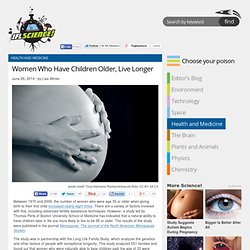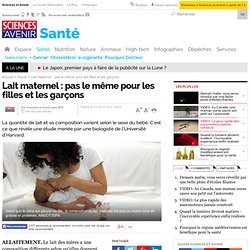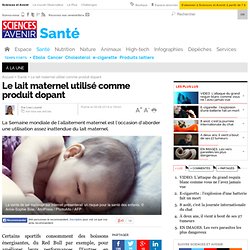

The BabySafe Project: How Wireless is Affecting Your Unborn Child. By K.T.

Weaver, Guest Writer for Take Back Your Power A new national awareness campaign urges pregnant women to take simple steps to reduce a baby’s exposure to wireless radiation. An international group of doctors and scientific experts is joining with non-profit organizations to urge pregnant women to limit their exposure to wireless radiation from cell phones and other devices by taking simple steps to protect themselves and their unborn children. The national public awareness campaign, called the BabySafe Project (www.babysafeproject.org), is being coordinated by Grassroots Environmental Education and Environmental Health Trust, and is based on independent scientific research linking exposure to wireless radiation from cell phones during pregnancy to neurological and behavioral problems in offspring that resemble Attention Deficit/Hyperactivity Disorder (ADHD) in children.
The Project is promoting ten simple steps women can take to limit their exposure to wireless radiation: K. Women Who Have Children Older, Live Longer. Between 1970 and 2006, the number of women who were age 35 or older when giving birth to their first child increased nearly eight times.

There are a variety of factors involved with this, including advanced fertility assistance techniques. However, a study led by Thomas Perls of Boston University School of Medicine has indicated that a natural ability to have children later in life are more likely to live to be 95 or older. The results of the study were published in the journal Menopause: The Journal of the North American Menopause Society. The study was in partnership with the Long Life Family Study, which analyzes the genetics and other factors of people with exceptional longevity. Lait maternel : pas le même pour les filles et les garçons. ALLAITEMENT.

Le lait des mères a une composition différente selon qu'elles donnent naissance à un garçon ou à une fille, révèle une recherche publiée vendredi 14 février. "Les mères produisent des recettes biologiques différentes pour un garçon et pour une fille", a expliqué Katie Hinde du département de biologie de l'évolution à l'université de Harvard. Des études sur des humains, des singes et d'autres mammifères ont révélé une variété de différences dans le contenu du lait et la quantité produite. Ainsi, les petits garçons ont du lait plus riche en graisse et en protéines, donc plus énergétique, tandis que les petites filles obtiennent de plus grandes quantités de lait. Plusieurs théories ont été avancées pour expliquer ce phénomène, a relevé Katie Hinde lors d'une présentation à la conférence annuelle de l'Association américaine pour l'avancement de la science (AAAS) réunie à Chicago du 13 au 17 février.
Les femelles nourries plus longtemps que les mâles JUMEAUX. CHEZ LES VACHES. Le lait maternel utilisé comme produit dopant. Certains sportifs consomment des boissons énergisantes, du Red Bull par exemple, pour améliorer leurs performances.

D'autres, en revanche, ont plutôt choisi... le lait maternel ! A l'image d'Anthony, un sportif américain âgé de la trentaine. "Cela me donne une énergie incroyable, a t-il déclaré au New York Mag. Je ne crois pas aux stéroïdes et autres produits énergisants, toutes ces ordures. Je veux des produits naturels. " INTERNET. Baby Babble: Cry Analyzer May Identify Unidentified Health Issues. The study notes that as many as one in five babies younger than three months are affected by colic.

(Photo : babyhealthcares.blogspot.com) Could it be possible to translate baby babbling into the wants and needs of newborns? It may just have seemed like a distant dream from a 1992 Simpsons episode starring Danny DeVito as Homer's brother, but turns out, scientists have long been contemplating how to convert kiddo crying into adult speech. Like Us on Facebook Most parents might mistake crying for hunger, sleepiness or "Turn off that damn Raffi record! " According to researchers via a press release, they created a computer-based tool that can analyze the acoustics of crying. Using different pitches and acoustic features could help reveal neurological issues that may change the way a baby's vocal cords function. "There are lots of conditions that might manifest in differences in cry acoustics. We certainly think this is incredible news. Early Exposure To Pets, Dirt & Germs Are Good For Babies. You’re probably familiar with the hygiene hypothesis: Children who grow up in germ-free, too-clean environments develop hypersensitive immune systems.

Previous work has shown that children growing up on farms, with regular exposure to microbes in soil, have lower allergy and asthma rates. Other studies, however, found increased risk among inner-city children who are exposed to high levels of roach and mouse allergens. So, what gives? The Urban Environment and Childhood Asthma study examined a birth cohort of 560 children at high risk for asthma in Baltimore, Boston, New York, and St. Louis over three years. A team of researchers looking through these data found that infants who grew up in homes with cockroach droppings and mouse and cat dander in their first year have lower rates of wheezing at age three, compared with infants who were unexposed to these allergens.
The protective effects, however, disappear if infants encounter them after their first year. ScienceAlert - Photos du journal.